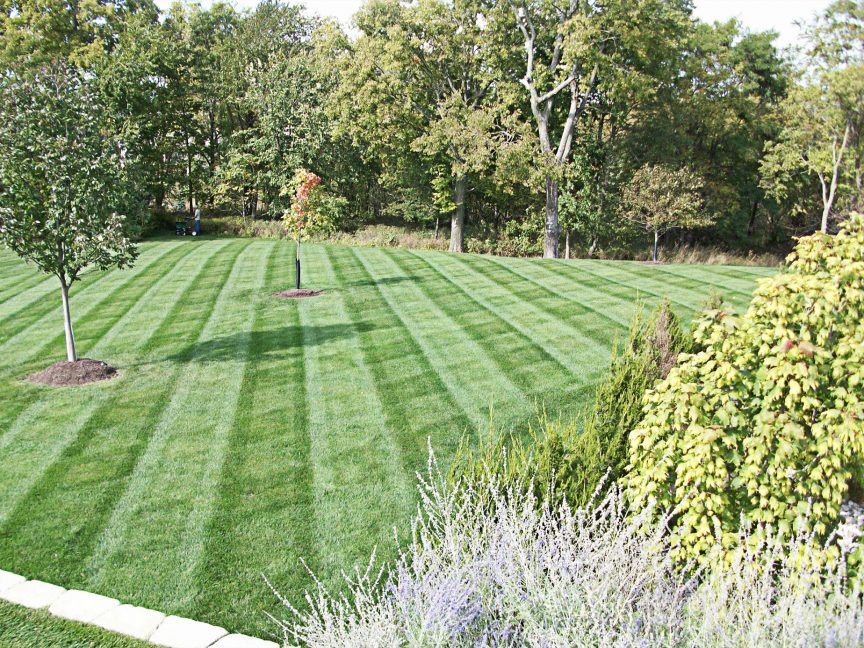From Anthony Pignataro
We’ve just experienced another mild winter, after a wet and hot 2019. The weather does it best to challenge the Professional Landscape Contractor and Professional Lawn Applicator. We’ve seen the hottest and wettest 10-year period on record in more than a century. This means more [and harder] to solve issues with turfgrass. So, what can you do to stay ahead of the turf issues that are on the horizon?
Go Early with a Crabgrass Preventer
Now is the time to get a jump on this summer’s crabgrass breakthrough. These last few years, we have seen a wet spring, followed by a quick heat up. This cycle of rain and heat causes the issues in turfgrass to start and increase quickly. Preventative care is your best chance at slowing and stopping crabgrass this season.
So, when do you start to apply crabgrass preventer?
With the current weather patterns, a two-week earlier application than normal is recommended for your first application of pre-emergent herbicide. Crabgrass will start germinating when the soil temperature reaches 53-55 degrees at a depth of 2 to 4 inches consistently for a few days. This can happen very quickly, especially with sunny days.
How is the soil temp checked?
One way is the NEWA – Soil Temperature Map. This is a map of the Northeast and will give you the average soil temp in that area, this model is from Cornell University. If you are not in the Northeast, you can look to the local universities near you that have an agronomics program or something similar.
Will Crabgrass Preventer Be As Effective Earlier?
An early application will not degrade the crabgrass preventer as much as you may think. The degrading of the preventer is due to microbial activity, which will begin when the soil temp reaches 40 to 50 degrees. In the early Spring you will experience very little degrading.
What if seeding is needed?
For years, professionals lived by a simple rule when establishing a new lawn or overseeding: never apply weed control as it will limit the ability to raise a healthy stand of turf. This meant that weeds had free reign to germinate and compete with the new turf for up to a full month. Then they would need to be controlled once the turf was established.
This is no longer an issue. You can apply weed control when seeding. There are several solutions that will allow you to spring seeding while preventing certain early weeds and will prevent crabgrass. These products will allow the grass seed to grow and once the new seed has germinated and is growing—you can apply the longer-lasting crabgrass preventer.
Low Impact & Organic-Based Solutions
Customers are looking for greener, healthier solutions for their lawn care. They want solutions that are safer for their kids or pets, but still give the rich green and healthy results they have come to expect.
At Central, we’re always looking at innovative solutions to help you be more efficient in your day-to-day. If you are looking to incorporate a lower-impact solution for turf, consider Hudson Valley Natural (HVN) products. HVN’s fertilizers combine conventional nutrients with organic material for longer-lasting feedings. The organic material offers tremendous benefits including: increased microbial activity, reduced surge growth, better disease resistance and suppression, and improved heat and drought tolerance. Better yet, HVN has effective solutions for crabgrass control [among others]. These combination fertilizers and pre-emergent are organic-based, have a lower impact on the environment, and are family and pet friendly.
Ask your Central rep to learn more about the other benefits of the Hudson Valley Natural product—found only at Central.
Finally, rely on Central to help, whether it’s questions about the newest innovations in agronomics, organic & low-impact programs, or finding the right solutions for a problem area. We stay at the leading edge of the industry and we’re ready to help you grow!
About Anthony Pignataro
Anthony Pignataro is our East Coast Turf Director and has more than four decades of experience in the horticultural industry. From landscape maintenance and construction to sod farm, grass seed and retail/wholesale nursery, Pignataro knows turf. With nearly a decade of experience researching, purchasing, and blending premium ryegrasses, fescues, and bluegrasses, Pignataro is an excellent resource for finding the right blend or mixture for your needs. He has spent much of his career solving turf-grass issues and can help you create the right fertilizer or pesticide program, whether it’s traditional, low impact, or organic.

